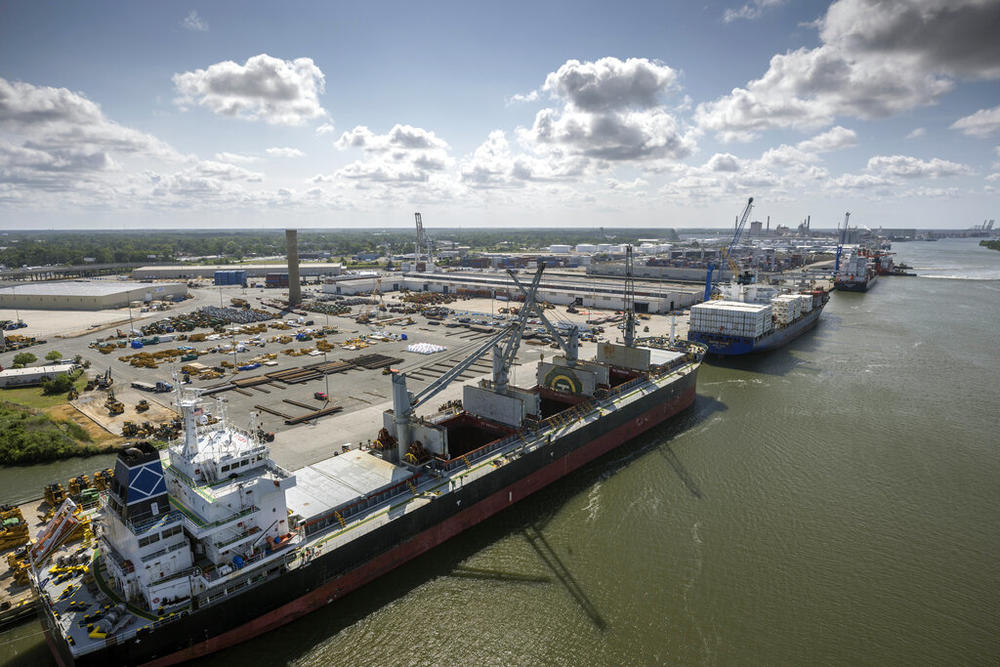
Caption
In this photo provided by the Georgia Ports Authority, three vessels work to load and unload cargo at the Georgia Ports Authority Ocean Terminal, June 24, 2022 in Savannah, Ga. On Monday, Dec. 5, 2022 the Georgia Ports Authority announced it will start remodeling the docks at Ocean Terminal in January 2023 to handle two large container ships simultaneously. The work will begin to transition the 200-acre facility to a container-only operation.
Credit: Stephen B. Morton/Georgia Port Authority via AP

